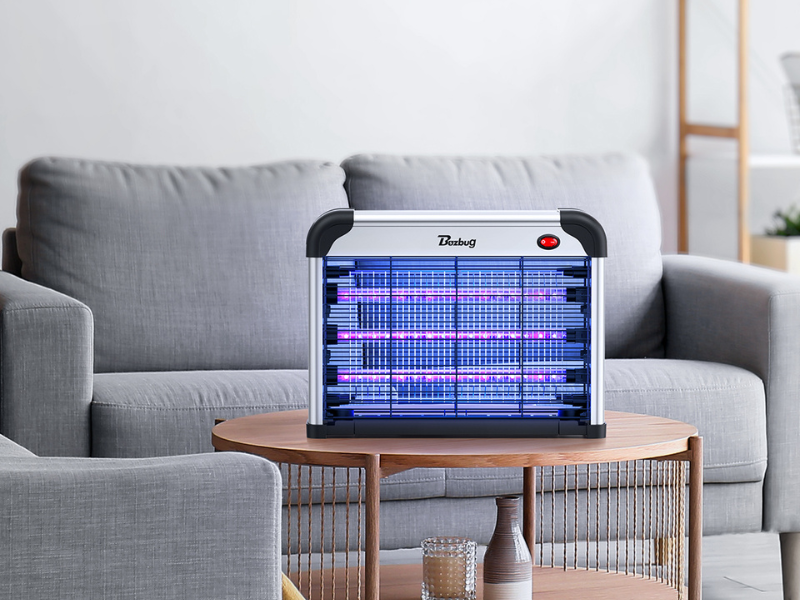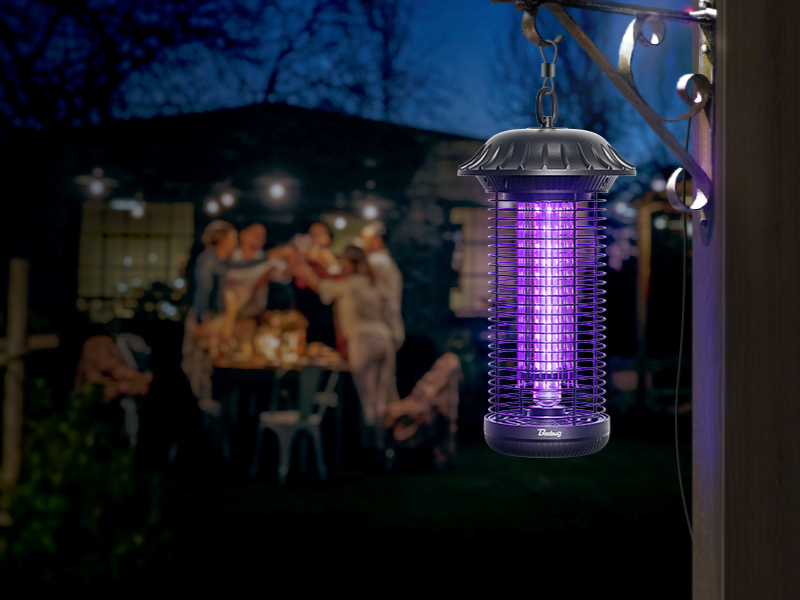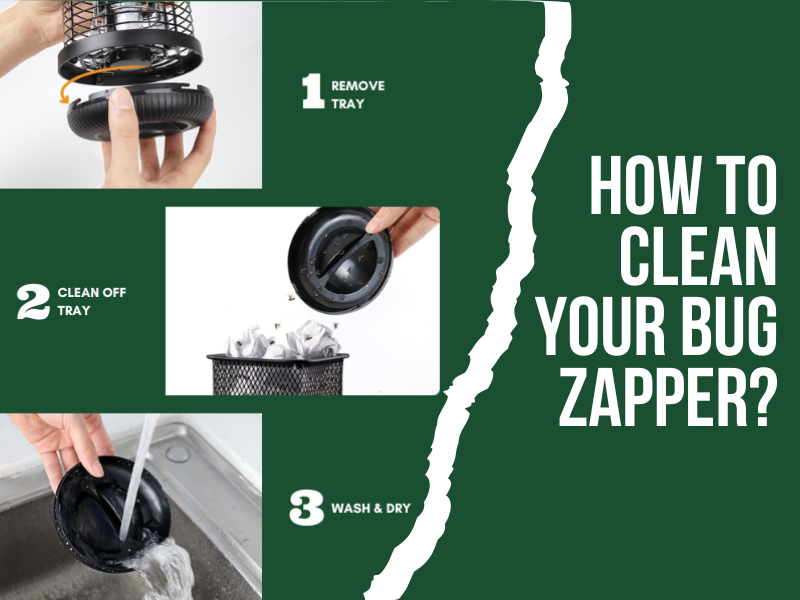1. Is It Safe to Use Bug Zappers Indoors?
If you’re wondering whether it's safe to use a bug zapper indoors, you’re not alone! These devices are super effective at keeping flying pests at bay, but there are a few things you should know before bringing one inside. The good news is, with a little care, bug zappers can be safely used in your home. Let’s break it down.
1.1 Keep an Eye on Fire Hazards
Bug zappers are powered by electricity, so naturally, there’s a small risk of fire hazards if used improperly. But don’t worry! By following the manufacturer’s guidelines and ensuring the zapper is placed in a dry, well-ventilated area, you can reduce this risk. Avoid placing it near flammable materials like curtains or furniture, and always check that the wiring and plugs are in good condition.
1.2 Pets and Kids: What About Their Safety?
If you have little ones or pets, you might be concerned about curious hands or paws getting too close. Fortunately, most bug zappers come with protective casing to keep tiny fingers safe from the electric grid. To be extra cautious, place the device in a location that’s out of reach for both kids and pets. Higher shelves or mounted positions work perfectly!
1.3 Watch Out for UV Light Exposure
Another common question is about the UV light emitted by bug zappers. While these lights are safe in small amounts, it’s best not to stare directly at them for long periods. Thankfully, most people don’t spend their evenings gazing into bug zappers! As long as you’re using the zapper as intended, you’re good to go.
2. Indoor Benefits of Bug Zappers: Why They’re Worth Considering?
Have you ever swatted at a mosquito indoors and thought, “There has to be a better way!”? Well, bug zappers might just be your indoor hero. These handy devices offer more than just a satisfying zap—they come with some surprising benefits that make them worth considering inside your home.
2.1 Chemical-Free Pest Control
One of the biggest perks of using a bug zapper indoors is that you don’t have to mess with chemical sprays or traps. No more sticky flypaper hanging around or breathing in sprays that leave an odd smell. Bug zappers do all the hard work naturally by attracting pests with light, then zapping them without you lifting a finger. It's clean, simple, and great for people who want to keep their indoor space fresh and toxin-free.
2.2 A Cleaner, Healthier Home
Flying insects can be more than just annoying—they can carry germs, too. Whether it’s mosquitoes, flies, or gnats, they don’t just bother you; they can contaminate food or spread bacteria. With an indoor bug zapper, you can dramatically reduce the presence of pests that can otherwise make your space less hygienic. Fewer flies buzzing around means less worry about what’s landing on your dinner.
2.3 Hassle-Free Operation
Bug zappers are a low-maintenance solution to a common indoor problem. Once you set it up, you pretty much forget about it, and it does its thing. There’s no need for constant monitoring or changing out traps. Most bug zappers just need occasional cleaning, and you’re all set! Plus, they operate quietly, so you won’t even notice them working until you realize your home is happily bug-free.

3. How to Maximize Efficiency: Best Placement Tips for Indoor Bug Zappers
So, you’ve got yourself a shiny new bug zapper for your home, but where do you put it? To get the most out of your bug zapper, placement is key. Putting it in the right spot can make all the difference in how effectively it zaps those pesky insects. Here’s how you can maximize its efficiency.
3.1 Avoid Competing Light Sources
Bug zappers work by attracting insects with their bright UV light, but if there’s another light source nearby, like a lamp or window, it can confuse them. Place your bug zapper in a relatively dim area where its light is the star of the show. A darker corner of the room, away from windows and other light sources, will draw bugs in faster than you can say “zap!”
3.2 Keep It Away from Food Prep Areas
While bug zappers can be your best friend in keeping flies away, you don’t want them too close to your food. The last thing you want is zapped bugs falling anywhere near your kitchen counters or dining table! Place your zapper near the entrance of the room or in an area where pests are most likely to enter, like near windows or doors, but away from places where you prepare or eat meals.
3.3 Elevate It for Maximum Coverage
Bugs tend to fly at higher levels, so mounting your bug zapper at around 5-7 feet off the ground will increase its efficiency. You don’t want it too low where it might get bumped, but also not too high where it becomes ineffective. A shelf or wall mount works great for this!
Summary: Safe, Efficient, and Worth It
Using a bug zapper indoors can be a smart, safe way to keep your home bug-free without harsh chemicals. By placing it in the right spot, away from food areas and competing lights, you can maximize its effectiveness. Whether you have kids, pets, or just want a cleaner indoor environment, bug zappers provide a low-maintenance solution that works quietly in the background. Follow the simple safety tips, and you’ll enjoy a pest-free space all year round!



